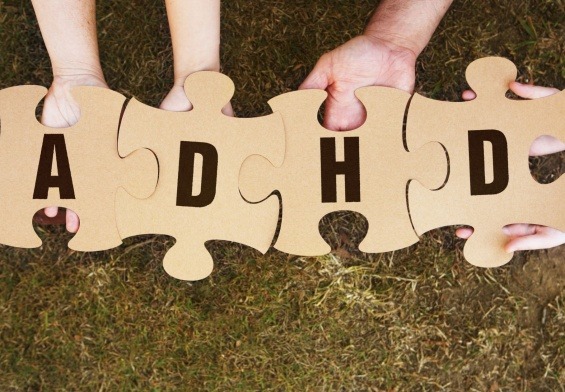You notice your child hiding behind you when someone says hello. They barely speak at birthday parties. You start wondering: “Are they just shy… or could this be autism?”
You are not alone. Many parents have the same worry and feel guilty even thinking it.
This article will not diagnose your child. But it will help you understand the key differences between shyness and autism, what to watch for, and when to talk with your child’s doctor.
What Is Shyness?
Shyness is a normal personality trait. Shy children feel nervous or uncomfortable around new people or in new places, especially at first.
Common signs of shyness:
- Hiding behind a parent when meeting someone new
- Speaking very quietly or not at all in groups
- Taking time to warm up at school, parties, or playdates
- Clinging to a caregiver in unfamiliar settings
A shy child usually:
- Feels more relaxed with familiar people
- Can talk and play normally at home
- Often becomes more confident over time as they gain experience
The big idea:
Shy children usually want to connect with others. They may need extra time and reassurance to do it.
What Is Autism?
Autism (autism spectrum disorder) is a brain-based developmental difference. It affects how a person:
- Communicates
- Plays and socializes
- Experiences the world (sights, sounds, textures, routines)
Autism is called a spectrum because children can look very different from one another. Some talk early and use big words but struggle with social rules. Others have delayed speech and may not use many words at all.
Common features of autism can include:
- Challenges with back-and-forth interaction
- Differences in eye contact and body language
- Repetitive movements or behaviors
- Strong or unusual reactions to sound, light, or touch
- Very focused or intense interests
The big idea:
Autism is not a phase or a “personality type.” It is a developmental condition that often needs support, not blame.
Shy vs Autism: Key Differences at a Glance
Here’s a simple comparison to help you see some of the main differences.
(Remember: this is a guide, not a diagnostic tool.)
| Area | Mostly Shy Child | Child on the Autism Spectrum |
| Desire for friends | Wants friends but feels nervous or awkward at first | May seem less interested in peers or unsure how to join |
| Eye contact | Avoids eye contact with strangers, better with family | May avoid eye contact most of the time, even with family |
| Response to familiar people | Opens up and becomes talkative once comfortable | Social differences show even with parents and siblings |
| Play style | Pretend play, copying others’ games once warmed up | May line up toys, spin objects, or repeat actions a lot |
| Communication | Quiet in groups but talks normally at home | Speech may be delayed, unusual, or very repetitive |
| Use of gestures | Points, waves, nods, shows things they like | May rarely point, wave, or show things to share interest |
| Change over time | Often becomes more outgoing with age and practice | Differences tend to stay over time without support |
| Across settings | More shy in new places, more relaxed at home | Differences appear in most places (home, school, playground) |
Signs That Point More Toward “Just Shy”
A child is more likely to be shy rather than autistic if they:
- Warm up after some time with new people or places
- Play and talk comfortably with close family or one trusted friend
- Use gestures like pointing, waving, nodding, and shaking their head
- Show pretend play (feeding a toy, pretending to talk on a toy phone)
- Bring toys or objects to you just to show you (“Look at my drawing!”)
- Make eye contact with familiar people at home
- Met most milestones on time (smiling at people, babbling, first words)
You may notice they are quiet at school or in groups, but at home, they can be silly, talkative, and very expressive. That “two different kids” feeling is common in shy children.
Signs That Suggest Autism, Not Just Shyness
These signs do not prove a child has autism, but they are reasons to talk with the pediatrician:
- Very limited eye contact, even with parents and siblings
- Rarely or never points to ask for things or to show you something
- Does not bring items to share interest (“Look!”)
- Prefers to play alone most of the time
- Little interest in other children, or plays next to them but not with them
- Repetitive behaviors, such as hand-flapping, rocking, spinning, or lining up toys
- Strong need for routines; becomes very upset by small changes
- Unusual reactions to sounds, lights, textures, or smells
- Covers ears often
- Refuses certain clothing because of how it feels
- Differences in speech and language, such as:
- Speaking later than expected
- Repeating the same words or TV lines (echolalia)
- Talking a lot about one topic, without a real back-and-forth conversation
You may notice that these differences are present in most places: at home, at daycare or school, and on the playground.
Can a Child Be Both Shy and Autistic?
Yes. A child can be both autistic and shy.
This might look like:
- A child who already has autism-related social differences and feels extra anxious in new situations
- child who appears “fine” at school but comes home exhausted or melts down from masking (hiding their autistic traits to fit in)
- A child who wants friends but has trouble understanding social rules, and feels nervous around peers
Because of this overlap, it can be hard for parents and even teachers to tell what is shyness and what might be autism. That is why a professional evaluation is so important.
What You Can Observe at Home
You know your child best. Here are some simple things to watch for in everyday life:
- Name response:
Do they usually look at you or respond when you call their name? - Sharing interest:
Do they bring toys, books, or objects to show you, just to share excitement? - Eye contact:
Do they sometimes look at your face when you talk or play, especially at home? - Gestures:
Do they point to ask for things or to show you something in the distance?
Do they wave bye-bye without being prompted every time? - Play style:
Do they pretend (play house, pretend to cook, talk for their dolls or action figures), or mostly repeat the same actions? - Across places:
Are they only quiet in public but talkative and interactive at home?
Or do you see the same differences everywhere?
It may help to take short notes or even short videos during playtime or everyday moments. These can be very useful when you talk with your child’s doctor.
When to Talk to Your Child’s Doctor
You should always feel comfortable bringing up worries with your pediatrician. Some signs that deserve a closer look include:
-
Not yet smiling at people by around 6 months
-
Still no babbling (like “bababa,” “dadada”) by around 12 months
-
Hasn’t started using single words by around 16 months
-
Isn’t putting two words together (without just repeating) by around 24 months
- Loss of words or social skills they used to have
- Very limited eye contact, gestures, and social interaction at most ages
You can say something like:
“I’ve noticed my child doesn’t point or look at me much when I talk. They mostly play alone and do a lot of repetitive play. I’m wondering if this could be autism.”
The doctor may:
- Ask more detailed questions
- Use screening tools for autism
- Refer you to a specialist, such as:
- A developmental-behavioral pediatrician
- A child psychologist or neurologist
- An early intervention program (for children under 3)
Asking for an evaluation does not mean you are “labeling” your child in a bad way. It means you are trying to get them the help and support they may need.
How to Support Your Child Right Now (Shy or Autistic)
Whether your child is shy, autistic, or both, there are gentle ways to support them:
- Keep routines predictable.
Simple routines (morning, bedtime) can reduce stress. - Prepare for changes.
Talk ahead of time about doctor visits, parties, or new places. Use pictures or simple stories if helpful. - Practice social skills in small steps.
Start with one other child at a familiar place before big group events. - Model greetings and sharing.
Show how to say “hi,” take turns, and share toys. Praise small attempts. - Create a calming space.
A quiet corner with soft lighting, a favorite toy, or headphones can help when they feel overwhelmed. - Stay calm during meltdowns.
Remember that meltdowns are usually a sign of overload, not bad behavior.
And just as important: take care of yourself. Parenting a child with any kind of challenge can be draining. It’s okay to ask for support—from family, friends, and professionals.
Key Takeaways
- Shyness is a common personality trait. Shy children usually want to connect but feel nervous at first, and they often open up with time and practice.
- Autism is a developmental difference that affects social interaction, communication, and behavior across many situations.
- Key differences often involve eye contact, gestures, pretend play, and interest in others, not just how talkative a child is around strangers.
- A child can be both shy and autistic, which makes things harder to sort out without a professional evaluation.
- If you are worried about your child’s social or communication skills, it is always appropriate to talk with your pediatrician and ask about screening or evaluation.
- You are not overreacting or being a “bad parent” for asking questions. Wanting answers is a sign that you care deeply about your child’s health and future.




